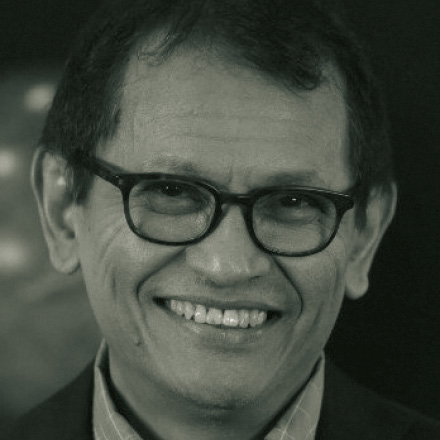Global economy
Deepening uncertainty

For some time, EM had been driving global growth while AE slowed. Now the gap is narrowing. It is even more worrying that growth is lower in AE and EM than the long-term or “secular” trend we saw before the crisis.
For the EM, the quandary is multitude. The outlook for commodity exporters is gloomy. Demand is weak, and prices are low. Manufacturing has slowed, especially in China.
At the same time, a strong dollar means that financing costs are rising. Stress is growing for all public and private-sector institutions that have large dollar-denominated borrowing. Today, companies in EM owe creditors about $ 4 trillion, four times more than in 2008.
The slowdown in China was expected and it is, so far, in line with forecasts. However, the international repercussions look worse than expected. Even countries that do little trade with China feel the pinch. Market confidence in general seems to be hit.
For years, monetary policy was extremely loose in the AE and especially in the USA. The current problems are a result. Very low interest rates in AE prompted capital flows to EM, where investors wanted to benefit from higher interest rates. The flows were huge and volatile. They made borrowing cheaper and expanded liquidity in EM. Both effects spurred credits as well as economic growth. At the same time, the exchange rates of EM currencies rose.
Now the central bank of the USA has begun to increase interest rates again, and the economic outlook is worsening in China. As a consequence, capital has begun to flow in the other direction. In EM, credit is suddenly becoming more expensive while national currencies are depreciating against the dollar.
Financial safety nets are needed, and conventional macroeconomic policies are unlikely to prove sufficient in this scenario. The capital flows are so huge that problems cannot be solved at the national levels.
In pursuit of healthy and inclusive growth, the EM are currently refocusing on building infrastructure. The governments know they cannot rise to the challenges on their own. This insight is an important reason for the recent proliferation of new international financial institutions (IFIs).
Another reason is EM’s frustration of only enjoying disproportionately small influence in the long-established IFIs. In this regard, the new institutions are meant to counterbalance the International Monetary Fund (IMF), the World Bank and multilateral development banks such as the Asian Development Bank, the Inter-American Development Bank or the African Development Bank.
In recent years, EM governments have been driving the establishment of new IFIs. One example is the Asian Infrastructure Investment Bank (AIIB) with a focus on infrastructure. Another is the Chiang Mai Initiative Multilateralisation (CMIM), a currency-swap arrangement with a focus on short-term liquidity pressure for the ASEAN countries plus China, Japan and South Korea. The New Development Bank, which is owned by the BRICS (Brazil, Russia, India, China and South Africa), will deal with both short-term liquidity and infrastructure.
Untested innovations
In light of deepening risks and uncertainty, short-term liquidity pressure is now increasing. The CMIM and similar initiatives, however, are still untested. The process of establishing them was fraught with bickering over political, organisational and other power issues. It remains to be seen whether the new schemes will be up to the tasks. It may prove easier to provide loans for infrastructure.
To some extent, the governments behind the new institutions were probably too self-confident in recent years. They could have focused more on ensuring the effectiveness of new currency-swap mechanisms. They may now have to make haste to achieve that goal. Because of higher interest rates in the USA, capital is now flowing out from the EM. Therefore, they are experiencing a destabilising jolt.
It is worth noting, however, that other AE are not following the US example. A “great divergence” is emerging, with Japan and the EU loosening monetary policy while the US is tightening it. The stage is set for an epic tug-of-war between the central bank of the USA on the one hand and the world’s other most important central banks in China, Japan and the EU on the other hand. It is impossible to predict what the results will be for the global economy.
It is equally impossible to predict what impact the EM will feel. It is certain, however, that the EM are on their own in defending themselves against capital outflows and market volatility. In recent years, the AE have displayed considerable monetary egoism and showed little concern for the impact of their policies on EM.
In early 2016, the financial market scenario is nerve-racking. Last year alone, the EM faced net capital outflows of almost $ 750 billion. Since 1988, the EM had not experienced net outflows. The start of this year was the worst on record for financial markets. This is an anomaly and worrisome.
None of this means that the EM will necessarily be mired in recession. It might help if the US economy picked up with strong dynamism. The easing of sanctions on Iran can prove a boost as well. Moreover, individual countries may experience developments that do not match the global trend. All in all, however, recession looks quite probable.
Overconfident establishment
The long-established IFIs do not express great worries however. The IMF, for instance, argues that markets are “overreacting” now. Its recent World Economic Outlook predicts that the growth rate for EM will be 4.5 % this year – higher than last year.
It also expects the world economy to expand by 3.6 %.
However, actual global growth was consistently lower than predicted by the IMF in recent years. It is likely that the Fund is over-optimistic once more. Some years back, the IMF commissioned a study, and the conclusion was that the Fund’s forecasts “display a tendency for systematic overprediction” (Timmermann 2006). Whether these forecasts should be taken seriously is anybody’s guess.
The multilateral development banks (MDB) are hardly better. One problem is that their models do not take into account the growing interdependence between national economies. Moreover, they rely on their member countries’ assessments, which may be biased. MDB predictions are thus often more wishful thinking than sober analysis.
The established IFIs, moreover, tend to use opaque language. Terms such as “uneven”, “moderating” or “broadly proceeding” growth are ambiguous and can prove misleading.
In principle, IFI forecasts are supposed to help policymakers to draft better policies and budget plans. Neither over-optimism nor vague statements serve this purpose. Accordingly, the policy advice the established IFIs give and country programmes they propose are sometimes irrelevant or even harmful. Structural-adjustment programmes have often failed (see box).
One cause of the financial meltdown of 2008 was that rating agencies had failed to assess financial institutions and real-estate markets accurately, thus fostering a misleading sense of stability. Conflicts of interest contributed to their failure. After all, the agencies’ clients are the major players in financial markets. The agencies’ reputation has not recovered.
A similar fate may befall the IFIs if they fail to provide objective analysis and forecasts, especially as vulnerabilities are most evident now. Failure to predict the full consequences of crises – unemployment, poverty, inequality, environmental damage et cetera – will make matters worse.
It is irritating, moreover, that the established IFIs have stayed silent on the growing monetary egotism of AE for years. It is not hard to see why EM governments wanted new IFIs.
Iwan J. Azis is an economics professor at Cornell University in New York State and the University of Indonesia.
He is the lead author of “Managing elevated risk”, a book published by the Asian Development Bank and Springer in 2014 and is available online free of charge.
ija1@cornell.edu
E-book link:
http://www.adb.org/sites/default/files/publication/150174/managing-elevated-risk.pdf
Reference:
Timmermann, A., 2006: An Evaluation of the World Economic Outlook Forecasts. Washington: IMF Working Paper No.06/59











